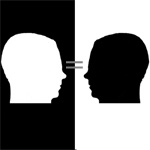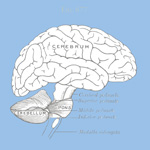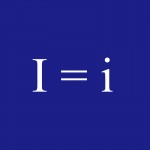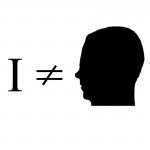The term “O pen Individualism” has a positive ring. If Daniel Kolak hadn’t adopted it, I might have used the word “open” for my own theory of what persons are. I haven’t yet hit upon a term ending in “ism” to represent the idea that persons are informational entities, or (to say the same thing differently) bundles of attributes, as opposed to substances. Like rivers whose constitutive substance (water) is always changing, persons constantly gain and lose attributes. And attributes are easily shared, readily copied from one individual to another. When you learn something from another person, you absorb part of himself. He is a collection of attributes, just as a book (the intellectual work, not the bound volume made of paper) is a sequence of sentences. To learn from another person is like incorporating a quotation from someone else’s book into one’s own composition. In learning from him, we take on part of what he is. The fact that attributes (or information, if you prefer) flow so freely between persons, makes the word “open” appropriate. We are open vessels, not closed ones. Continue reading “Open Individualism – Being Everyone”
pen Individualism” has a positive ring. If Daniel Kolak hadn’t adopted it, I might have used the word “open” for my own theory of what persons are. I haven’t yet hit upon a term ending in “ism” to represent the idea that persons are informational entities, or (to say the same thing differently) bundles of attributes, as opposed to substances. Like rivers whose constitutive substance (water) is always changing, persons constantly gain and lose attributes. And attributes are easily shared, readily copied from one individual to another. When you learn something from another person, you absorb part of himself. He is a collection of attributes, just as a book (the intellectual work, not the bound volume made of paper) is a sequence of sentences. To learn from another person is like incorporating a quotation from someone else’s book into one’s own composition. In learning from him, we take on part of what he is. The fact that attributes (or information, if you prefer) flow so freely between persons, makes the word “open” appropriate. We are open vessels, not closed ones. Continue reading “Open Individualism – Being Everyone”
Kolak: I Am You
 People who think deeply about the puzzle cases of personal identity have come up with a variety of bold and radical responses. Like Alexander hacking through the Gordian knot, Parfit wielded an analytical scalpel to divide personal identity from what matters in personal survival, reaching the conclusion that ordinary survival is about as bad as being destroyed and replaced by a replica. Robert Nozick was so impressed by the difficulties posed by fission cases that he decided personal identity must depend on extrinsic factors: you are identical to whatever person is your closest continuer at any future time, a thesis with the odd consequence that, if your closest continuer after fission dies, you may suddenly find yourself being someone who until that time was someone else, your second-closest continuer. David Lewis’ solution to was to abandon the tried-and-true principle that persons can be counted by counting heads. Since there are two persons after fission, there were two all along, even though, before fission, they occupied the same body and were unaware of their duality. (Bizarre though it sounds, I support Lewis’ solution as one that inflicts the least damage to the traditional concept of a person.) Thomas Metzinger’s analysis led him to conclude that “no such things as selves exist in the world.”
People who think deeply about the puzzle cases of personal identity have come up with a variety of bold and radical responses. Like Alexander hacking through the Gordian knot, Parfit wielded an analytical scalpel to divide personal identity from what matters in personal survival, reaching the conclusion that ordinary survival is about as bad as being destroyed and replaced by a replica. Robert Nozick was so impressed by the difficulties posed by fission cases that he decided personal identity must depend on extrinsic factors: you are identical to whatever person is your closest continuer at any future time, a thesis with the odd consequence that, if your closest continuer after fission dies, you may suddenly find yourself being someone who until that time was someone else, your second-closest continuer. David Lewis’ solution to was to abandon the tried-and-true principle that persons can be counted by counting heads. Since there are two persons after fission, there were two all along, even though, before fission, they occupied the same body and were unaware of their duality. (Bizarre though it sounds, I support Lewis’ solution as one that inflicts the least damage to the traditional concept of a person.) Thomas Metzinger’s analysis led him to conclude that “no such things as selves exist in the world.”
In his book, I am You, Daniel Kolak offers yet another radical theory of personal identity: There is only one person, and that person is all of us. What are commonly understood to be boundaries between individuals, he says, do not “merit the metaphysical significance ordinarily accorded to them.”
Our borders do not signify boundaries between persons. We are all the same person. [Kolak, 2010, p 1] Continue reading “Kolak: I Am You”
Persons in Law
 We cannot understand the self by examining people in isolation. Too many important aspects of personhood only appear in a social context.
We cannot understand the self by examining people in isolation. Too many important aspects of personhood only appear in a social context.
Thomas Metzinger’s work describes the self-model in which our ideas about ourselves are rooted. The model is (usually) transparent, in that we operate through it without (usually) any awareness of a distinction between the model and the underlying reality. It is a model to which we have a profound emotional attachment—most of us care, deeply, about ourselves in the past, present, and future. As a result, our self-models are motivational. They spur and shape our actions. We evaluate possible courses of action by putting our self-models through various simulations, and responding emotionally to the different outcomes we imagine. The research of Antonio Damasio has begun to show how our emotions must inform our executive decision-making processes in order for us to make what are commonly recognized as ‘rational’ decisions.
Most of what Metzinger and Damasio have to say about the self is as true of isolated individuals as of human beings immersed in society. But a case can be made that the concept of the self could only have emerged in a social context. I have argued that our concepts, particularly the entities recognized by our ontology, reflect what is important to us. The spatio-temporal boundaries between ‘things’ are artificial, not natural; they do not exist in nature, but are imposed upon nature by human beings. A person is an entity whose boundaries roughly coincide with those of a human biological organism. A person is commonly considered to begin sometime around birth; sooner in some traditions, later in others. The person is usually thought to persist until biological death; but many people believe that it continues much longer than that; and some believe that if the organism is sufficiently damaged, then the person may cease to exist before its organism dies.
Among other things, a person is a unit of moral and legal responsibility—a bearer of enduring rights and privileges, duties and obligations, merits and demerits, assets and liabilities, debts and credits. Those attributes of individual persons result from, and depend on, the fact that individuals are members of a larger society. If a human being is isolated for a long time from other human beings, legal obligation disappears from his life, and moral obligation, if it does not entirely disappear, is vastly curtailed. I would not go so far as to say that an isolated human being ceases to be a person; only that certain central and important aspects of personhood simply disappear from his or her life. Having moral and legal rights and obligations is a central and important aspect of personhood. Continue reading “Persons in Law”
Engaging with the Future
 Our investments in the future do not stop paying dividends when we die. Other beneficiaries may cash the cheques, but that does not represent a loss to ourselves, because our connections to them are not fundamentally different from our connections to ourselves during our remainder of our lifetimes. In that way, it’s as though someone else always cashes the cheques.
Our investments in the future do not stop paying dividends when we die. Other beneficiaries may cash the cheques, but that does not represent a loss to ourselves, because our connections to them are not fundamentally different from our connections to ourselves during our remainder of our lifetimes. In that way, it’s as though someone else always cashes the cheques.
In practice, this means we need not hold all our future eggs in one basket. We have no reason to invest only in ourselves. It is no less rational to work towards goals that benefit other people, or the non-human world, than it is to work for our own benefit. They may be goals for places far outside our homes, and for times following our personal deaths. We can commit ourselves to goals at future times when there will be no one alive for whom we now feel full-blown self-concern. Like Terry Fox, we can engage with a future in which we will no longer exist. Continue reading “Engaging with the Future”
Death, Revisited
 I am always skeptical of claims that humans are unique. The facts that we use tools, and clothes, and language, have failed to differentiate us from other species. The more we learn about nature, the less well defined seem to be the boundaries between natural domains.
I am always skeptical of claims that humans are unique. The facts that we use tools, and clothes, and language, have failed to differentiate us from other species. The more we learn about nature, the less well defined seem to be the boundaries between natural domains.
Avoiding sweeping generalizations, I will still say that the human species has gone further than others in some directions, including preoccupation with the future and awareness of death. I doubt my cat Charlie thinks further ahead than his next meal, and not even that far when his belly is full. Charlie lives in the day, and in the hour: he hunts with ferocious intensity, and sleeps soundly afterwards. I, in contrast, devote most of my energy to projects which may not yield results for weeks or years, results which in some cases (like the Phantom Self project) are highly uncertain. Charlie lives mainly in the scene of his immediate experience; I concern myself mainly with the future portrayed in my imagination. Charlie’s experience is, by and large, an accurate representation of the world he lives in; but the future events I imagine are often very different from events in the real future, as it finally turns out.
As early as young adulthood, some people feel a need to plan their entire lives. Our society encourages them: to choose a career path, for example, that will finance a mortgage. Before young people have paid off their student loans, ads exhort them to start saving for retirement. Careful planning for the future is praised as prudent behaviour.
Such prudent planning allowed our ancestors to make the transition from roving bands of hunter-gatherers to settled agrarian societies – a transition that presaged a population explosion and the beginning of human dominance of this planet. Success in farming required thinking about next year. Migration to colder climates would have been impossible without the ability to think things through: to preserve and tan the hides of slaughtered animals with the intention of making clothes and footwear; to collect stones and sods in summer in order to build shelters for the coming winter. Natural selection favoured the species – ours – with the greatest ability to plan for the long term. And so it has continued to this day: our powerful imaginations allow us to coordinate our efforts, invent, design, and build, anticipate potential disasters and sometimes successfully avoid them. Being so preoccupied with our futures leads inevitably to thinking about our deaths. Continue reading “Death, Revisited”
Hazlitt’s Insight
The least pain in our little finger gives us more concern and uneasiness, than the destruction of millions of our fellow-beings. – William Hazlitt
As early as 1796, when he was just eighteen, the English essayist William Hazlitt may have become the first Westerner to see that self-concern is not rationally required.
Hazlitt published his insight in 1805, in his Essays on the Principles of Human Action. Introducing the 1990 edition, John Price informs us that “The reading public and the reviewing journals regarded it, for the most part, with indifference or hostility.” Hazlitt’s Essays and the idea they contain fell into obscurity for the best part of two centuries, after which the idea re-emerged independently as part of a new wave of thought about personal identity Continue reading “Hazlitt’s Insight”
The Anatomy of Self-Concern
 Published in 1998, Raymond Martin’s Self-Concern set a new direction for the philosophical discussion of personal identity by shifting the focus from “the normative question of whether this or that should matter in survival to the largely descriptive question of what…actually does…matter.” Martin questions the philosophical goal of trying to show that we all should (rationally) respond in the same way to the puzzle cases – a goal shared by Parfit and his opponents – calling the attempt “survival-value imperialism.” In examining how people actually value their own survival, his book goes a long way towards characterizing the conditions that make it difficult or easy for people to self-identify across time. It is largely about the psychology of self-concern. Continue reading “The Anatomy of Self-Concern”
Published in 1998, Raymond Martin’s Self-Concern set a new direction for the philosophical discussion of personal identity by shifting the focus from “the normative question of whether this or that should matter in survival to the largely descriptive question of what…actually does…matter.” Martin questions the philosophical goal of trying to show that we all should (rationally) respond in the same way to the puzzle cases – a goal shared by Parfit and his opponents – calling the attempt “survival-value imperialism.” In examining how people actually value their own survival, his book goes a long way towards characterizing the conditions that make it difficult or easy for people to self-identify across time. It is largely about the psychology of self-concern. Continue reading “The Anatomy of Self-Concern”
What We Are
 What are we, if we are informational entities?
What are we, if we are informational entities?
Like most people (and unlike some philosophers) I will stick to the view that we are persons. In this post I will try to state clearly what persons are according to the theory of persons I recommend, which I call the Information Theory. I will begin to flesh the theory out, by drawing out some of its consequences.
The Information Theory
Here are some claims of the Information Theory of Persons.
- Persons are entities that can be multiply instantiated, like tunes, dances, literary works, electronic files, computer programs, and genes.
- Like all those things, persons are entities that can be expressed as information. A person can cross a spatio-temporal gap in the form of information carried by any convenient medium, such as electronic files.
- Persons are distinct from the living biological organisms they depend on, as software is distinct from the hardware it runs on. Continue reading “What We Are”
What We Are Not
 We are not Cartesian egos. We are not biological organisms either.
We are not Cartesian egos. We are not biological organisms either.
Not Cartesian egos
A Cartesian ego is a kind of mental or spiritual thing that is thought to inhabit a human body and give it life. Many people believe we can exist independently of a human body – that we survive the death of our bodies, continuing to have experiences either without a body, or by being reborn in another body.
I hardly need to argue against Cartesian egos. The idea is in widespread disrepute without any assistance from me. It is hard to reconcile with a scientific view of the world. We have no convincing evidence that such things exist. Until we have, we should use Occam’s Razor for its intended purpose to prune them from our conceptual scheme. Leaving them in creates clutter and awkward problems.
One problem comes from split brain research. When the corpus callosum connecting a patient’s two cerebral hemispheres is cut, two centres of consciousness appear where there was one before. Should we conclude that the surgeon’s knife divided a spiritual substance? Instead of deepening our understanding, this multiplies mysteries.
Despite its academic unrespectability, the idea that we are Cartesian egos is embraced by billions of people. It is deeply involved with emotion, as this passage from Umberto Eco’s novel The Mysterious Flame of Queen Loana illustrates:
One evening the spiritual director stood in front of the altar balustrade, illuminated – like all of us, like the entire chapel – by that single candle that haloed him in light, leaving his face in darkness. Before dismissing us, he told us a story. One night, in a convent school, a girl died, a young, pious, beautiful girl. The next morning, she was stretched out on a catafalque in the nave of the church, and the mourners were reciting their prayers for the deceased, when all of a sudden the corpse sat up, eyes wide and finger pointing at the celebrant, and said in a cavernous voice, “Father, do not pray for me! Last night I had an impure thought, a single thought – and now I am damned!” Continue reading “What We Are Not”
The Self Illusion

To find the right answers, ask the right questions. I have skated around the question, “Is there a rational justification for self concern?” without coming up with a solid argument that settles it one way or the other. But there is a related question which can be answered.
Two Views of Teleportation
As we have seen, teleportation by means of information transfer can be viewed in two ways. The facts of the case are: I am scanned in North Vancouver and my information is sent to Omaha, where it is used to construct a living replica of me. Meanwhile, the original in North Vancouver is destroyed. Two views of these events are:
SURVIVE: I am transported from North Vancouver to Omaha.
DIE: I am killed in North Vancouver, and someone else – my replica – is constructed in Omaha.
People who think about teleportation disagree about whether SURVIVE or DIE is an accurate description of the case. How can it be settled which view is true – or whether neither is true?
People who disagree about SURVIVE and DIE do not disagree about the facts of the case. The facts are not in question. No scientific experiment can be devised to settle which of SURVIVE and DIE is an accurate description of the facts. Continue reading “The Self Illusion”

